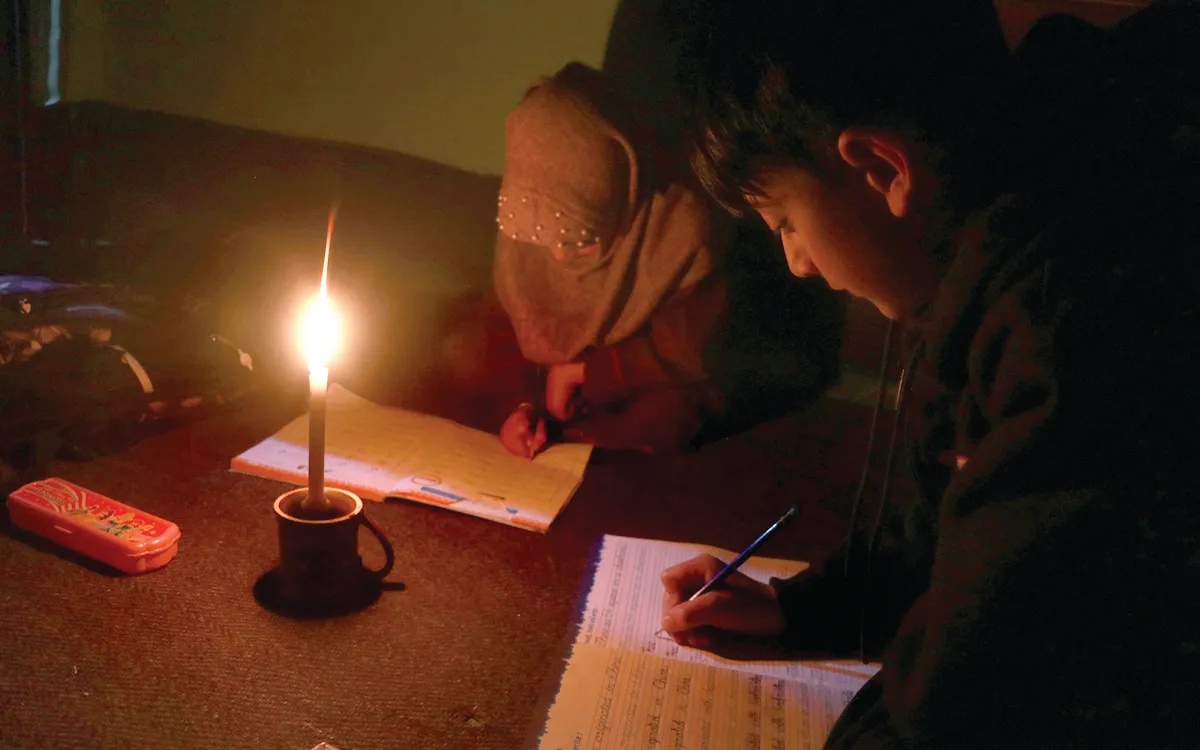Srinagar, Dec 1: The genesis of the ongoing power crisis in Kashmir can be traced to the failure of Jammu and Kashmir to increase its power generation capacity in recent times, resulting in heavy dependence on expensive external energy sources.
The Power Development Corporation (JKPDC), owned by the J&K government, has failed to bring new power projects online, with many still in the tendering stage or awaiting completion, according to the JERC-approved Business Plan of the Power Department.
Official data from JKPDC reveals that power generation in 2019-20 was 5452 million units (MU), which decreased to 5123 MU in 2020-21, 5281 MU in 2021-22, and 5199 MU in 2022-23.
Projections suggest that there would not be a substantial increase in JKPDC’s power generation in the foreseeable future.
J&K operates 13 power projects through JKPDC, with a combined capacity of 1197.4 MW.
These projects, including Baghilar-1, Baghilar-2, LJHP, and USHP-11 Kangan, are spread across the Chenab and Jhelum Basins.
However, the majority of these projects have capacities below 30 MW.
Additionally, the central sector manages six projects through the National Hydroelectric Power Corporation (NHPC), contributing a total of 2250 MW.
However, the actual power received by J&K often falls below 700 MW, occasionally dropping below 500 MW, due to the non-addition of new power plants over the last decade.
One illustrative example is the New Ganderbal power project, envisioned a decade ago, still in the tendering stage and expected to be commissioned in August 2027.
Similarly, Lower Kalnai and Mohra power projects are also in the tendering stage, with expected commissioning dates in August 2027 and January 2026.
Only two projects, Karnah and Paranai, are projected to be commissioned by December 2023.
The consequence of this power deficit is evident in J&K’s reliance on purchasing electricity from outside power companies.
In the last decade (2012-13 to 2021-22), J&K has spent a staggering Rs 55,254 crore on power purchases.
According to official data, power purchase bills from external power discoms reached Rs 8197 crore in 2021-22, Rs 7047 crore in 2020-21, and Rs 6987 crore in 2019-20.
Another prominent player in the hydropower generation sector in J&K, Chenab Valley Power Projects Private Limited (CVPPPL), has disclosed that it has not commissioned any new projects in the past five years.
CVPPPL is a joint venture company between NHPC (51 percent) and JKPDC (49 percent), established at the initiative of the J&K Government and the Government of India to harness the vast hydro potential of J&K.
The company was incorporated in 2011 with the mission to contribute to the power generation capacity of the region.
In response to a Right to Information (RTI) query, CVPPPL confirmed that no power projects had been completed during the years 2019, 2020, 2021, 2022, and up to August 2023.
Furthermore, the CVPPPL clarified that they have not undertaken any power projects in the Kashmir division, indicating a focus on other regions.
However, they reported that three significant hydropower projects, Pakal Dul (1000 MW), Kiru (624 MW), and Kwar (540 MW), are in various stages of construction, and an additional power project, the 930 MW Kirthai-II Hydroelectric Power Project, is in the survey and investigation stage in the Kishtwar district.
The CVPPPL has been entrusted with the construction of several projects on a Build, Own, Operate, and Maintain (BOOM) basis, with an aggregate installed capacity of 3094 MW.
According to a government spokesman, J&K has entered into historic Power Purchase Agreements (PPAs) for 1600 MW of solar power, 900 MW from hydro, and an additional 500 MW from thermal plants, currently in progress following the decision of the J&K Administrative Council under the Shakti Policy. “This will not only lead towards resource adequacy for the region but will also provide an optimal mix of hydro, thermal, and solar generation, while the efforts are underway to harness wind power as well so that the strength behind renewable energy is utilised to the maximum,” the spokesman said.
According to government officials, J&K plans to increase its current hydropower generation capacity of 3500 MW over the next three years.
In this regard, five mega hydropower projects – Ratle (824 MW), Kirthai-II (930 MW), Sawalakote (1856 MW), Dulhasti-Stage II (258 MW), and Uri-I Stage-II (240 MW)—with a combined capacity of 4134 MW have been accepted for execution in cooperation with NHPC.
These projects are expected to cost Rs 34,882 crore, and when completed, J&K would have an excess power.
According to the official document of the J&K government, delays in project implementation have been eliminated and their pace has accelerated.
“Joint ventures are used to create ongoing HEPs, such as Kiru (624 MW), Kawar (540 MW), and Pakaldul (1000 MW). Major civil and electro-mechanical construction on these projects will be finished by 2022–2023,” it states.







